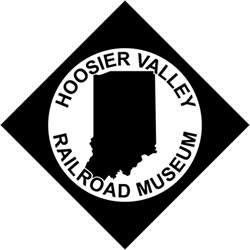Santa Trains will be running this Saturday. Please remember that we operate on Central Time.
The Grand Kankakee Marsh: A Forgotten Natural Wonder
Known as the "Everglades of the North," the Grand Kankakee Marsh was an expansive wetland covering a vast swath of northern Indiana. Excursion trains along the former Chesapeake & Ohio rail line travel through a portion of the former marsh as passengers are delighted by wildlife, trees, and wildflowers.
The railroads in the area once brought many hunters, trappers, and fishermen into the marsh from the Chicago region, returning them home with their bounties. The railroads also transported grasses back into the city for use in packaging. There were numerous hunting lodges located throughout the marshland, including at English Lake.
Once a magnificent natural wonder, the marsh stood as a testament to the beauty and diversity of wetland ecosystems in the United States. Spanning across the region, this vast marshland teemed with rich flora and fauna, serving as a crucial habitat for numerous species. Sadly, due to decades of human intervention and drainage efforts, the Grand Kankakee Marsh is now a shadow of its former self.
A Jewel of Biodiversity
The Grand Kankakee Marsh was a thriving ecosystem known for its extraordinary biodiversity. The marshland covered over 500,000 acres, encompassing diverse wetland habitats such as swamps, marshes, and shallow lakes. It was home to a remarkable array of plant species, including cattails, sedges, water lilies, and various species of aquatic grasses. This abundance of plant life supported a multitude of animal species, including migratory birds, waterfowl, turtles, frogs, and diverse fish populations.
Native American Heritage
Before European settlement, the Grand Kankakee Marsh played a vital role in the lives and culture of Native American tribes such as the Miami and Potawatomi. These tribes recognized the marsh's ecological significance, relying on its resources for sustenance and utilizing its wetlands for transportation and trade. The marsh was not only a source of food and materials but also held spiritual importance within their cultural practices.
Human Impact and Drainage
In the late 19th and early 20th centuries, as the United States underwent rapid industrialization and agricultural expansion, the Grand Kankakee Marsh faced significant human intervention. Draining the marsh to convert it into farmland became a prevailing notion, driven by the desire for economic development and land use conversion. Canals were constructed to channelize and drain the wetlands, and large-scale projects attempted to straighten the meandering Kankakee River. As a result, the natural hydrological balance was disrupted, leading to irreversible changes in the marsh's ecosystem.
Environmental Consequences
The extensive drainage efforts had profound environmental consequences for the Grand Kankakee Marsh. As the wetlands diminished, so did the habitat for numerous plant and animal species. Migratory birds lost a critical stopover point during their long journeys, and waterfowl populations declined. The altered water flow and increased sedimentation disrupted the delicate balance of the aquatic ecosystem, affecting fish populations and water quality. The loss of wetland vegetation also resulted in decreased water retention and increased flooding in surrounding areas.
Restoration Efforts and Future Prospects
Recognizing the ecological and cultural value of the Grand Kankakee Marsh, efforts have been made in recent years to restore and preserve what remains. Various organizations, environmental groups, and government agencies have been collaborating to reconstruct wetlands, improve water quality, and promote habitat restoration. These initiatives aim to reintroduce native plant species, recreate natural hydrological conditions, and support the recovery of wildlife populations. The goal is to revive the Grand Kankakee Marsh's ecological functions while providing recreational opportunities and environmental education for the surrounding communities.
The nearby Kankakee Fish & Wildlife Area contains more than 4,000 acres of habitat for migrating waterfowl and other wildlife. Bald eagles can sometimes be sighted along the tracks along with other birds of prey. Many songbirds, butterflies, deer, and other animals call the area home. Wildflowers, tall grasses, and riparian plants can be seen from the train as we pass through remnants of the Grand Kankakee Marsh.
Hoosier Valley Railroad Museum
P.O. Box 75
North Judson, Indiana 46366
Call or Email
574-896-3950 Depot Phone
[email protected]
Museum Hours
The museum is open on Saturdays from 9:00 am to 4:00 pm. The museum operates on Central Time (Chicago Time)

